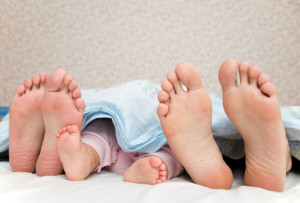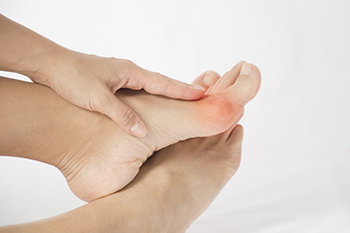
Early intervention is key to halting chronic foot problems in children. Issues that are common with children’s feet include flat feet, which describes the appearance of a foot that does not have a well-developed arch and the foot lays flat against the floor. While there are usually no symptoms of flat feet in kids, some children may complain of cramping, pain, and tenderness in the foot or leg. They might limp or exhibit an aversion to athletic activities and walking because they say their legs and feet get tired. It is important that parents do not automatically attribute a child’s foot pain to growing pains as it can be more serious. It is suggested that if your child says or shows they feel pain in their feet or legs, a podiatrist be consulted to do a thorough examination of the feet and rule out anything serious or structural abnormalities that might be helped with simple intervention techniques.
Making sure that your children maintain good foot health is very important as they grow. If you have any questions, contact one of our podiatrists of Westside Podiatry Center, LLP. Our doctors can provide the care you need to keep you pain-free and on your feet.
Keeping Children's Feet Healthy
Having healthy feet during childhood can help prevent medical problems later in life, namely in the back and legs. As children grow, their feet require different types of care. Here are some things to consider...
Although babies do not walk yet, it is still very important to take care of their feet.
Avoid putting tight shoes or socks on his or her feet.
Allow the baby to stretch and kick his or her feet to feel comfortable.
As a toddler, kids are now on the move and begin to develop differently. At this age, toddlers are getting a feel for walking, so don’t be alarmed if your toddler is unsteady or ‘walks funny’.
As your child gets older, it is important to teach them how to take care of their feet.
Show them proper hygiene to prevent infections such as fungus.
Be watchful for any pain or injury.
Have all injuries checked by a doctor as soon as possible.
Comfortable, protective shoes should always be worn, especially at play.
If you have any questions please feel free to contact one of our offices located in Liverpool, Camillus, Skaneateles, Oswego, and Cicero, NY . We offer the newest diagnostic and treatment technologies for all your foot and ankle needs.




